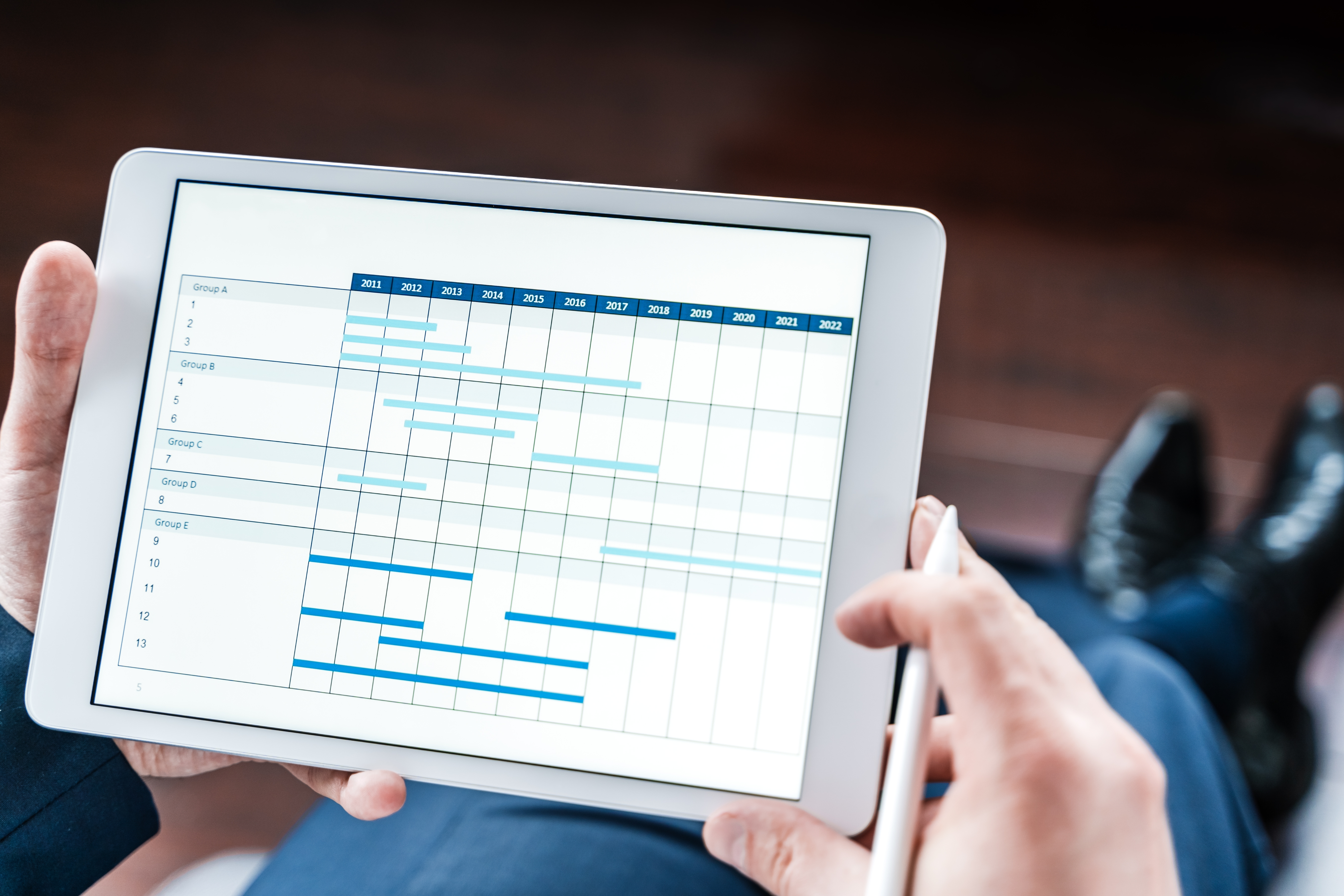A website design brief is an essential part of any website project. It helps you define the scope of the project, set expectations, and communicate clearly with your web design company.
But what exactly should you include in your website design brief? And how can you ensure that you get the best possible outcome?
In this article, I’ll explain what a website design brief is, who should write it, how to write one effectively.
What Is A Website Design Brief?
A website design brief is an outline of all the information and content on your site – including images, text, navigation etc. It provides a clear overview of everything that will be included on your new web page or landing page.
It also helps you, as the client, to communicate the project’s requirements clearly and concisely with your web design agency – hopefully, that’ll be us. This way, everyone knows exactly what they are getting when we kickstart the web design project.
The purpose of writing a website design brief is to make sure everyone involved understands what needs to happen before any work begins. You want to avoid wasting time by starting on the wrong foot!
Who Should Write Your Website Design Brief?
At Sinfa Digital, we’re no strangers to helping businesses with their web design brief. However, they’re not always easy to write.
Whilst we can help you, a website design brief should be created by you, the client, as the Business Owner or Marketing Director. That’s because you know your company the best, and will have the answers to all the fundamental questions. We’ll need to get as much these answers from you and down on the brief, to make sure everyone involved is crystal clear on what exactly will the project entails. Even if you haven’t figured everything out yet, having some sort of idea down on paper will do wonders for our web design project.
Of course, we can help you write the brief for you, but the document produced will not be a brief, but a web design proposal. Both works for us.
If you’re aiming for a simple brochure website with limited functionality, or are looking for a more hands-off approach, then writing a good web design brief becomes less of an issue. Check out our standard build web design package here.
The Anatomy Of The Perfect Web Design Brief
So far, we talked about what is a design brief and who should write it? But what exactly should we put into a website design brief? How can we ensure that you get the most out of it?
Well, here’s a list of all the components that we believe are critical in writing an effective brief that will help us build a great website for you.
The Website Project Overview, Goals & Success Criteria
The first section should be about why you’ve decided it’s time to get a new website.
You most likely didn’t make this decision overnight. Why are you moving away from your current website? What problems does it not solve for your business? What would a new website mean for your business? These are important questions as the answers to them will start giving us a clear picture of the final website that you want.
We use this section to understand your business goals related to this project. For example: “Our goal is to increase sales through search engine optimisation”. Or “we aim to improve customer service” – whatever makes sense for your business.
Finally, we discuss success criteria. If you don’t define what success looks like, you won’t achieve anything. So, let’s talk about the end goals – what you’d like to see after completing this web design project. Do you want to get a 30% increased in website traffic? Perhaps, Do you want your website to work properly on mobile devices? Or possibly to get 7 more clients per month? Whatever it is, tell us here!
Your Business / Company Description
The second topic to cover should be your company profile. This is where you describe your brand values, what products and services you sell, industry-specific information, and any other relevant details.
You may also include the names and contact details of the stakeholders and nominated champions for different areas of your business. This will help us move the project forward, especially when issues arise.
Lastly, you may also want to include some loose ideas on your plans for the future, such as what direction are you planning to grow. That’s because it’ll help our design team future-proof the final product as much as possible.
Your Target Customer And Areas To Focus On
After covering everything about you and your business, the next section will focus on your target audience. Who are they, what’s their demographic and psychographics? These can be characteristics such as their age, gender, interest, job positions, and anything that’ll give us a better view of how to get their attention and best position your website.
In addition to knowing who your ideal customers are, it’ll be very beneficial if we can learn more about the benefits and features that they care about the most or any areas that you’ll like the project to focus more on.
Your Competitor’s Information & Research
Now that we’re done with defining your target audience, it’s time to look at your competition. We need to find out what your competitor’s websites are doing well and not well, and decide if there is any room for improvement.
There are many ways to research your competitor’s website. One of the most obvious places to start would be to visually inspect it. What pages do they have? What sections does each page have? How are they handling common issues that you’ve experienced? This will drive the branding, site structure, content structure and so on.
From an SEO perspective, you can use tools such as Ahrefs to find out exactly how your competitors are ranking on Google. The findings here will help you further plan your website structure and content plan.
Other than our starting web design package (standard build), we’ll cover this section in extreme detail. In our experience, that’s because the quality of the output directly affects your website’s online presence and how well it converts your website visitors into paying customers.
Your Design Requirements (Websites You Like & Dislike)
After we get the big picture topics out of the way, it’s time to cover areas related to this project specifically. Let’s start with the web design requirements.
What kind of designs do you prefer? Do you like clean minimalistic layouts? Or maybe something bolder and colourful? Maybe even both! It doesn’t matter which one you choose; just know that these two styles work well together.
Do you have your brand guidelines? If not, we can help you develop one too. A brand guideline document will help your company build a stronger and more consistent brand.
It’ll be very good if you can let us know other websites that you like and dislike in this section too.
Depending on the web design package you have selected with us, we’ll help you cover this section as part of our design process.
Your Functional & Technical Requirements
After sorting out the design requirements, the next area to cover should be the technical and functional requirements of the project.
Does the website require a blog/news section? An image gallery with different filters? A complex questionnaire that’ll help your website visitor find the best insurance product? Or perhaps some sort of interactive elements to help your brand ‘pop’ more?
We’ll need to get as much detail of all these technical requirements as possible as it’ll affect architectural and design decisions further down the line. It’s also important because we can make sure that we’re all on the same page before we start designing your website.
Your Content & Materials
This section is where you outline how the content and materials will be delivered. Will you provide us with the brand materials? Who will provide the content? Will it be yourself, or someone you outsource, or us? When will you provide them to us? Will you provide any images?
Content is king! Without quality content, nothing else matters.
The bulk of all website projects fail due to content-related delays or insufficient content. Without properly thought out and quality content, the website will not provide any value, which will impact the website’s effectiveness after launch.
Overall, in this section, you need to be clear about who will be responsible for providing the copywriting and other materials on time.
We have graphic designers and copywriters who can help you out in these areas – just let us know. Please be specific about what website copy you require (we’ll have additional questionnaires for you to help us out), and also if you require us to help you source the graphics, images and videos too.
The Project Timeline & Schedule
Having a clear set of milestones and timelines set up will help everyone keep on time and prevent the project from derailing.
This includes things such as: when do I expect to receive my first draft? How many revisions are there going to be? What happens at each stage? And so on…
If you’re not sure, we can help! Through our years of experience in web design, we follow a 21 step web design process; from our initial conversations to post-product launch.
Your Web Design Project Budget
It is important to understand the budget that you have in mind, as it’ll influence how much time we can commit to this project.
By being upfront about your budget, we can help you understand what we can and cannot achieve, as well as priorities to focus on to help you get the best results.
For example, our starting web design package (standard build) focuses on building a polished website using existing templates. It’s perfect for businesses with a more modest budget. However, with a higher budget, we can help you customize your website more to cater for your specific needs; whether it’s on competitor research, user experience (UX), user interface (UI), or getting the right functionalities in place.
Your Website’s Hosting, Support & Maintenance
The last section to include in your website design brief should cover what happens after launching your website. Where will your website be hosted? Who will support your website when something happens? How will your website be maintained?
Normally, these are all questions that you should answer in your brief. However, by working with us, we’ll have all your website hosting, support, and maintenance covered, and more! Simply pick from one of our monthly subscriptions by deciding the level of engagement from us.
Website Design Brief Templates
Here’s a bunch of web design brief templates that we like:
– Website Design Brief by White Fuse
You can also request a copy of our client project discovery questionnaire by contacting us here.
Conclusion
All in all, creating a good website design brief is essential to ensure everything runs smoothly during the entire project lifecycle.
A good website design brief is very similar to a web design proposal. The difference is the brief is written for the web design agency, whilst the project proposal is the other way around.







